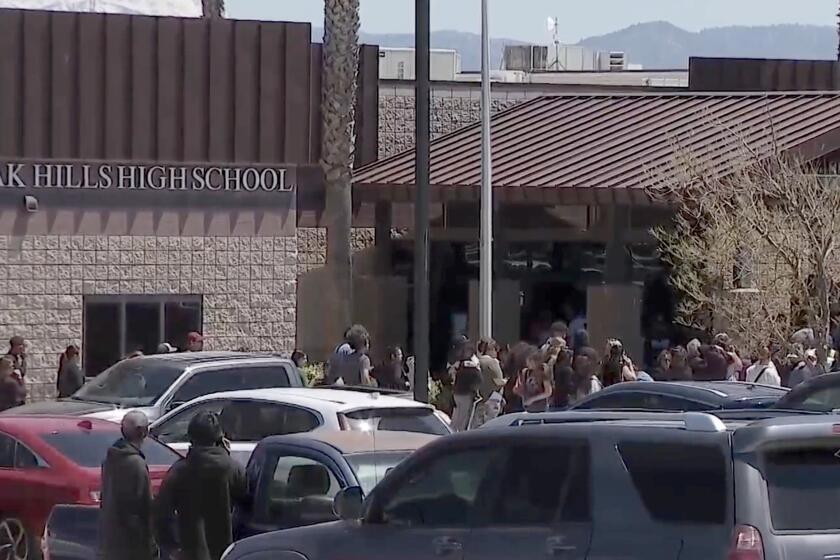No baby herons killed in Oakland wood chipper, federal officials say
Federal wildlife officials said Tuesday that no baby herons were killed in an Oakland tree-trimming incident that sparked outrage from bird activists who claimed some had been mangled in a wood chipper.
Steve Martarano, spokesman for the U.S. Fish and Wildlife Service, said investigators came to the conclusion based on witness interviews, reviewing cellphone footage and inspecting the wood chipper.
Still, the investigation is ongoing to determine what caused five black-crowned night herons to topple nearly 25 feet to the ground earlier this month, causing injuries such as scrapes, ruptured air sacs and a fractured beak in one of the babies.
“We’re still trying to figure out who moved the nest,” Martarano said.
Herons are protected under the Migratory Bird Treaty Act that prevents their moving or removal without an approved permit.
“It is a violation to disturb active nests,” Martarano said, noting it was too early in the investigation to determine if the incident could lead to criminal charges.
Martarano said the agency has not determined if a heron snagged between branches, a picture of which was published in the San Francisco Chronicle, died as a result of the incident.
The Civic Center post office on 13th Street hired a company May 3 to cut branches dangling over service vehicles. Equipment used for the job belonged to Ernesto’s Landscaping, Martarano said.
The investigation came on the heels of witnesses reporting some of the herons were killed in a wood chipper, claims initially denied by the wildlife service, the post office and Ernesto Pulido, who owns the landscaping service.
The surviving herons are recuperating at the International Bird Rescue’s facility in Fairfield, Calif. Organization spokesman Andrew Harmon said the herons are recovering “extremely well.”
“Some of them should transfer soon to an outdoor aviary, and that could be in as early as two weeks,” Harmon said. “We’re also considering releasing them in an East Bay habitat, just not where they [originally] came from.”
The herons’ progress can be seen via BirdCam in a warm incubator.
More to Read
Start your day right
Sign up for Essential California for news, features and recommendations from the L.A. Times and beyond in your inbox six days a week.
You may occasionally receive promotional content from the Los Angeles Times.







